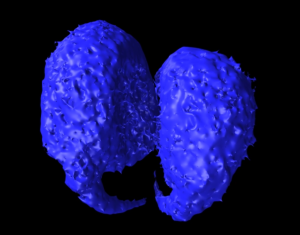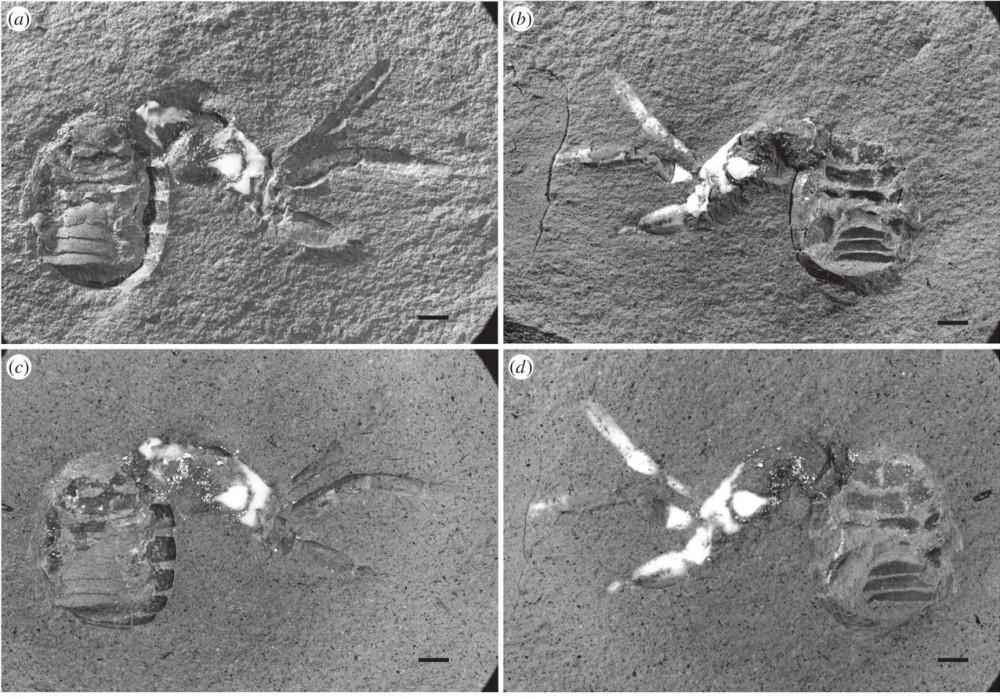Almost a Spider: Advanced 3D Imaging Reveals a New Type of Arachnid that Lived 305 Million Years Ago
The ancestors of spiders started to appear more than 318 million years ago. There are 45,000 different species of spiders alive today and they can be found on every continent save Antarctica, making them one of the oldest, diverse and most successful life forms ever to exist on the planet. Not only do they predate the dinosaurs, but the oldest groups of spiders alive today first started to appear more than 200 million years ago. Despite a huge range of diversity, in order for a spider to be classified as a spider it needs to have a few unchanging characteristics, including most importantly spinnerets that it can use to spin silk webs.
Unfortunately the exact origins of spiders are still a bit of a mystery, as fossil data is often imprecise and incomplete. One of the tools that researchers often use to trace the lineage of certain species and fill in the holes is to compare them to relative or sister species that have significant similarities but a few key differences. The era when spiders first started to appear was rich with similar life forms, including a cousin family of now extinct arachnids called uraraneids, which could produce silk, but lacked spinnerets and had a tail-like appendage. It is unclear how these arachnids used the silk that they produced, or if they even did, but they would have been incapable of spinning a spider’s trademark web.
In the 1980s at Montceau les-Mines in eastern France, a fossil-bearing mineral deposit was found that was rich with preserved insects, arachnids and other prehistoric life from 305 million years ago during the Late Carboniferous period. Among those fossils was what looked like a spider, but since most of its body was completely encased in rock it could not be identified. It made its way to the University of Kansas where it sat in a box for years, untouched and unidentified until Dr. Russell Garwood from the University of Manchester got his hands on the fossil and decided to take a closer look at it using a CT scan. What he found didn’t seem to match up to any other arachnid fossil, so he teamed up with Berlin’s Museum für Naturkunde, the University of Kansas and Imperial College London to study the ancient fossil further.
The team of researchers worked with the Natural History Museum and the Diamond Light Source facility in Oxfordshire, who used their powerful synchrotron to generate high powered x-rays that were capable of capturing more detail than a standard CT scan. The new data from the x-rays allowed the researchers to reconstruct the prehistoric arachnid’s body and convert it into a detailed 3D image using advanced SPIERS software developed specifically for the reconstruction of fossils. What they found was not a spider, but in fact a completely new species of arachnid that lacked a spider’s spinnerets as well as lacked the uraraneid’s tail-like flagellum. However, like a spider, the creature, dubbed Idmonarachne brasieri, had eight legs and two strong, prominent jaws. The researchers believe that they have filled a ‘gap’ in the evolution of arachnids, with I. brasieri being the closest relative to spiders ever discovered.
Say hello to Idmonarachne brasieri – a newly discovered ancient spider cousin. Full story: https://t.co/qoQLkq6p0V pic.twitter.com/53wnNHaMCO
— BBC Science News (@BBCScienceNews) March 30, 2016
“The earliest known spider is actually from the same fossil deposit – and it definitely has spinnerets. So what we’re actually looking at is an extinct lineage that split off the spider line some time before 305 million years ago, and those two have evolved in parallel. Our new fossil occupies a key position in the evolution of spiders. It isn’t a true spider, but has given us new information regarding the order in which the bits of the anatomy we associate with spiders appeared as the group evolved,” Dr. Garwood told the BBC.
While the original CT scan data seemed to prove that I. brasieri was not a spider, the researchers thought that it was possible that the spinnerets may have just been missing. If that were the case, there would be evidence of a hole in the creature’s 1.5 cm body, so they needed to verify that it definitely lacked them. To do that they needed to capture an image that was much smaller than a CT scanner was capable of, so they turned to the powerful x-rays generated by the Diamond synchrotron, a type of particle accelerator similar to the Large Hadron Collider. The incredibly detailed scans revealed that I. brasieri really did not have spinnerets and was in fact a completely separate and distinct genus of arachnid.
Since the same fossil deposit where I. brasieri was found contained the earliest known spider fossils ever discovered, I. brasieri doesn’t seem to be an early ancestor of modern spiders but a distinct creature that has simply gone extinct. Both the spider and I. brasieri seem to be direct descendants of Attercopus, a proto-spider that lived more than 380 million years ago. Dr. Garwood and his fellow researchers published their findings in the journal Proceedings of the Royal Society B as a paper titled “Almost a Spider: a 305-million-year-old Fossil Arachnid and Spider Origins.” What do you think of the impact technology had here? Discuss in the 3D Imaging for Almost a Spider forum over at 3DPB.com.
Subscribe to Our Email Newsletter
Stay up-to-date on all the latest news from the 3D printing industry and receive information and offers from third party vendors.
You May Also Like
Printing Money Episode 17: Recent 3D Printing Deals, with Alex Kingsbury
Printing Money is back with Episode 17! Our host, NewCap Partners‘ Danny Piper, is joined by Alex Kingsbury for this episode, so you can prepare yourself for smart coverage laced...
Insights from Cantor Fitzgerald on AM’s Q1 2024 Landscape
A recent survey by Cantor Fitzgerald sheds light on the persistent challenges within the additive manufacturing (AM) industry in the first quarter of 2024. Based on responses from 38 industry...
3D Printing Financials: Xometry’s Scaling up and Strong Start to 2024
Xometry (Nasdaq: XMTR) kicked off 2024 with strong results, boosting its marketplace and technology to new heights. Both revenue and gross margin soared, fueled by an expanding global network of...
3D Printing Financials: Desktop Metal Targets Recovery Amid Net Losses and Revenue Downturn
Despite facing a decline in revenue and the persistent challenges of a tight economic climate, Desktop Metal (NYSE: DM) is making strides toward operational efficiency. The first quarter of 2024...




































